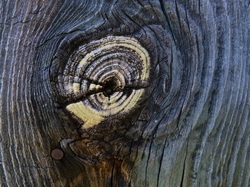Author - Lee Chang Tye
http://www.relaxedmindtaichi.com
| Relaxed Mind Tai Chi |
|
|
Even though I had been learning & practicing Tai Chi for almost 2 decades, I was very surprised at how much information and detail I was being taught when I first started learning the GM Huang Sheng Shyan version of Prof. CMC's short form with my teacher Wee Kee Jin. It was obvious the depth of detail and knowledge he had of the form was because he was taught incredibly well by his Master (Huang Sheng Shyan) and that he'd been receptive enough, and done all the hard work, in absorbing and internalizing it all within his own practice. Over the years since I first started learning from Kee Jin, those instructions concerning the accuracy of the form have never wavered & has remained true to what the Master taught him. And over the years I've begun to understand the good reasons behind those details and how consistent they are with the Tai Chi principles. I take great consolation in knowing that what I am learning is as close as possible to what the Master taught, so his genius insights live on.
Author - Lee Chang Tye http://www.relaxedmindtaichi.com
0 Comments
 I found this lovely Yin Yang image on a free image site, unfortunately I can't remember the site to attribute its rightful credit. I found this lovely Yin Yang image on a free image site, unfortunately I can't remember the site to attribute its rightful credit. Splitting Wood & Tai Chi Living on the Mountain has introduced me to my first experience of splitting wood with a splitting axe. After the initial struggling and periods of exhaustion, I began to relax and to see how using various Tai Chi principles increased the efficiency & safety of this chore. It also made it more enjoyable, so I'd like to share my thoughts with you. Once you have: safely set up your piece of wood securely on a stable supporting block of wood; know where the axe blade should strike by reading the visual, tactile, sound cues; have used enough muscular force to lift the axe high enough in readiness for the arcing downward swing - you are now ready to tap into the profound art of Tai Chi (Chuan). It is in the downward swing & instant of impact where the Tai Chi principles can be used to great effect for the amateur, elderly, or weaker wood splitter. To initiate the downward circular swing, the movement comes from your “base” (feet, legs, hips) in a slight “sinking” action where your "mind-intention" sinks into the ground under both feet, the hips simultaneously turn from an angle (as you lift your axe from one side) to face square on the target the instant before impact. At all times you should keep your weight spread across the soles of both feet and feel as if both feet/ankles were “grounded in mud.” And all your ankles, knees, hips, spine, elbows should be slightly bent but relaxed and “open”. In Tai Chi when one thing moves, everything moves as if the whole body is “connected", so you experience that initial force generated from the ground through your “base” up your body, down your arms, through your hands to the tip of the axe blade - as the arc unfolds. It's important to keep the back, shoulders and arms relaxed (somewhat elastic) as you swing and not tensed with aggressive intention. So as you are about to make impact, sink your shoulders & elbows amplifying the centripetal force in a relaxed fashion. Keep the swing in the mid-line. And on impact keep your grip on the axe handle “light”& relaxed so as to avoid impact forces shooting back into your wrists. Also on impact simultaneously sink your mind down into the ground under both feet and aim through the piece of wood to the desired point below. Your intention should be less of “smashing” than of “slicing through”. Powerfully built men & experienced splitters may do it differently but I found using these Tai Chi Chuan principles in the downward swing to be more productive, accurate, energy conserving, and preventative against aches & pains – especially in the back muscles and wrist for someone who doesn't want to rely on brute strength, enjoy. Lee Chang Tye Instructor - "Relaxed Mind Tai Chi'  Lovely image from artist Wortgewand at Pixabay Lovely image from artist Wortgewand at Pixabay Lately I have spent hours splitting wood of various sizes and diameters for heating the fireplace. As this has been my first experience of splitting wood with a weighted splitting axe, it's been a fun learning experience - not to mention a decent workout. After a tentative start, my technique developed and I began to get into the swing of things (pardon the pun). It became an excellent method of practicing the Tai Chi principles when using a heavy "sword" or weapon. As time went on, I began to read (listen to) the wood better, visual & tactile cues such as: the dryness, the density, the decomposition, the line of the grain - whether the grain was knotted, gnarled, or straight lined. The tactile and sound cues such as on impact of the axe blade with the wood, you can listen & feel the "crack" or split occurring, or whether the impact was met with an equally resistant "bounce"/"rebound" of Yang force back into your wrist. Which reinforces the immediate lesson for holding any Tai Chi sword, and that is to always hold it "lightly". That is NOT tightly gripped with the fingers, thumb, palm and wrist, in this way you don't receive that hard force back into your wrist on impact. I began to see that where the wood grain was solid & gnarled or too dense, it was the equivalent of your push hands partner having a solid root - and not the time to issue as you would just get it back. Also the issuing lines of attack that can be visualised through the opponents body were not favourable if the grains were gnarled or knotted. Repeated swings of the axe could only chip and indent those areas but not split those pieces/areas of wood no matter how many "forceful" swings I used. Energy efficiency and accuracy in swinging the axe (or weapon) to split wood is obviously the best way. As I got better, my whole body moved as one, and when the axed moved, everything moved. The downward swing was initiated from my base (although some muscle force is necessary to lift the heavy axe to the point where the connected forces from the base take over) and on impact both feet were grounded & rooted, yet the body was relaxed. The downward arcing/circular acceleration of the swing of the axe head (I'd like to think) was the initiated by "sinking" down into the base then amplified by the elastic like power of the body/back/shoulder relaxing instead of muscular tension and contraction. I thought of my upper body continuously linked/connected to the base, this in turn was further amplified by the circular centripetal force of the arms swinging downwards. As with the body, I sought to let go of any tension in the arms, forearms, and hands as the axe found its mark. The mind intention focusing on the target and "thinking only of cutting" (as Musashi Maru - the great Japanese swordsman said) the axe at times became an extension of my body and (I'd like to believe) that the chi or jing was directed to the tip of the blade as it cut. At these times my energy didn't feel dispersed nor did I feel exhausted (like I did on the first day), instead more relaxed and focused and the wood also split (or would soon split) more easily, almost effortlessly. Of course I could be just kidding myself, and maybe have just gradually chose easier pieces of wood to cut, but today compared to the first time I started splitting wood, I didn't feel tired, flustered, nor did I get pain in my wrist from any impacts... and the wood split much more easily. |
These are my thoughts about various aspects of Tai Chi. They may or may not be original and I try to give credit where credit is due. Wee Kee Jin Workshop Series
"Paid Amazon Links"
Click to set custom HTML
Archives
November 2023
Categories
All
|
|
|